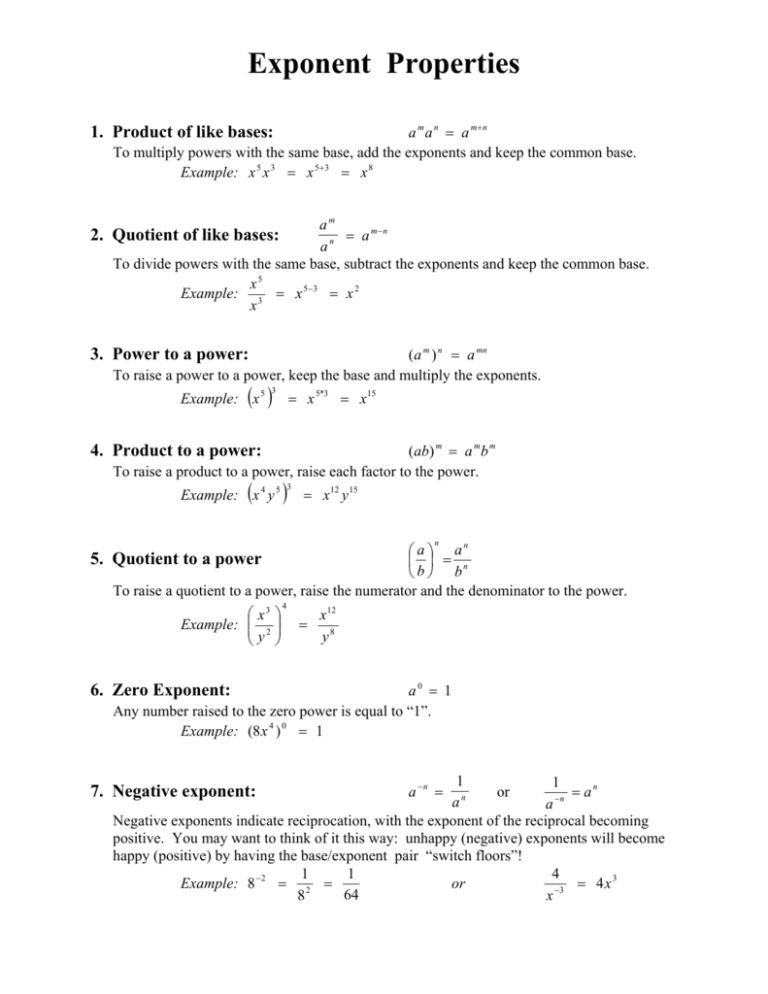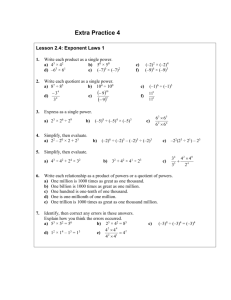laws of exponents - HRSBSTAFF Home Page
advertisement

Exponent Properties 1. Product of like bases: a m a n = a m+ n To multiply powers with the same base, add the exponents and keep the common base. Example: x 5 x 3 = x 5+ 3 = x 8 am m− n n = a a To divide powers with the same base, subtract the exponents and keep the common base. x5 Example: 3 = x 5−3 = x 2 x 2. Quotient of like bases: 3. Power to a power: (a m ) n = a mn To raise a power to a power, keep the base and multiply the exponents. ( ) Example: x 5 3 = x 5*3 = x 15 4. Product to a power: (ab) m = a mb m To raise a product to a power, raise each factor to the power. ( Example: x 4 y 5 ) 3 = x 12 y 15 n n a a 5. Quotient to a power = n b b To raise a quotient to a power, raise the numerator and the denominator to the power. x3 Example: 2 y 4 = x 12 y8 6. Zero Exponent: a0 = 1 Any number raised to the zero power is equal to “1”. Example: (8 x 4 ) 0 = 1 1 1 or = an n −n a a Negative exponents indicate reciprocation, with the exponent of the reciprocal becoming positive. You may want to think of it this way: unhappy (negative) exponents will become happy (positive) by having the base/exponent pair “switch floors”! 1 1 4 Example: 8 − 2 = 2 = or = 4x3 −3 64 x 8 7. Negative exponent: a −n =











